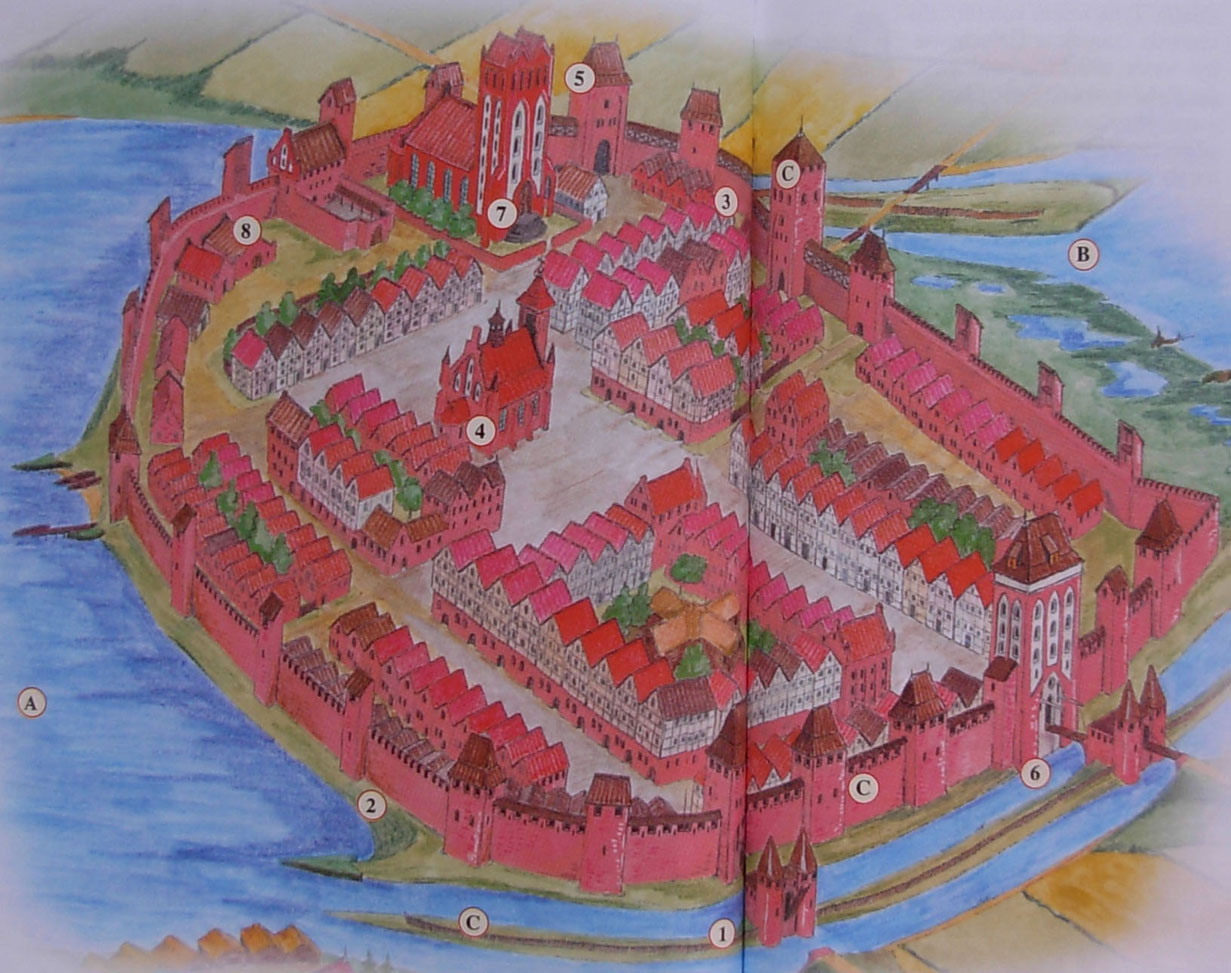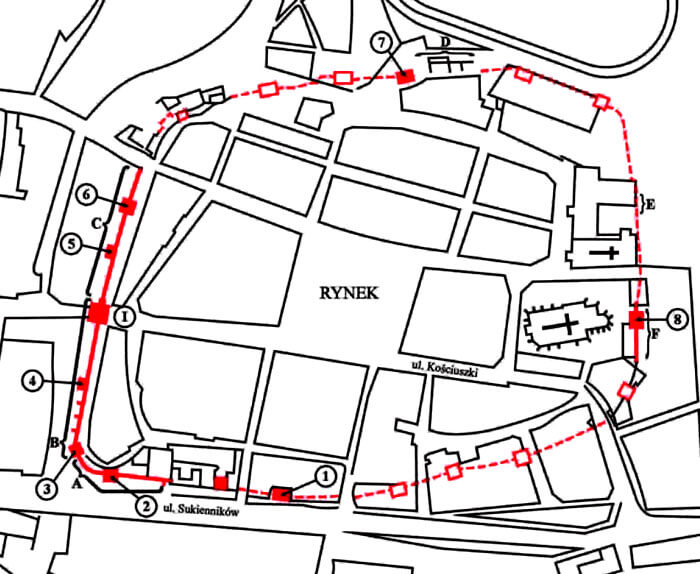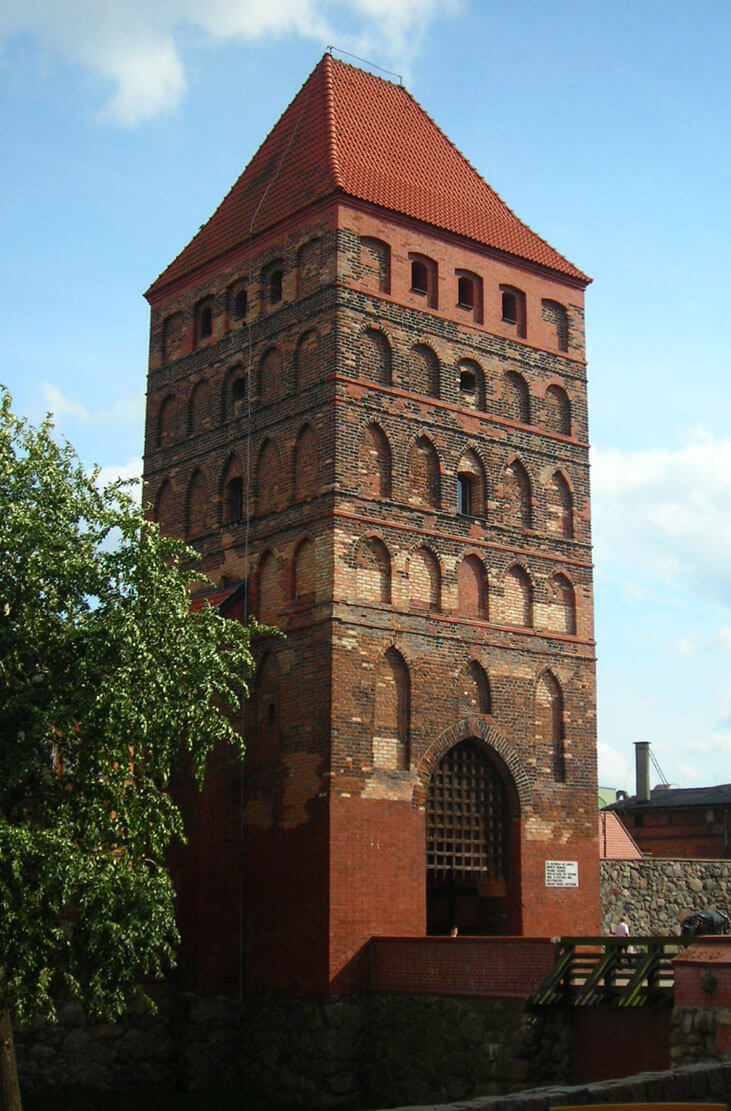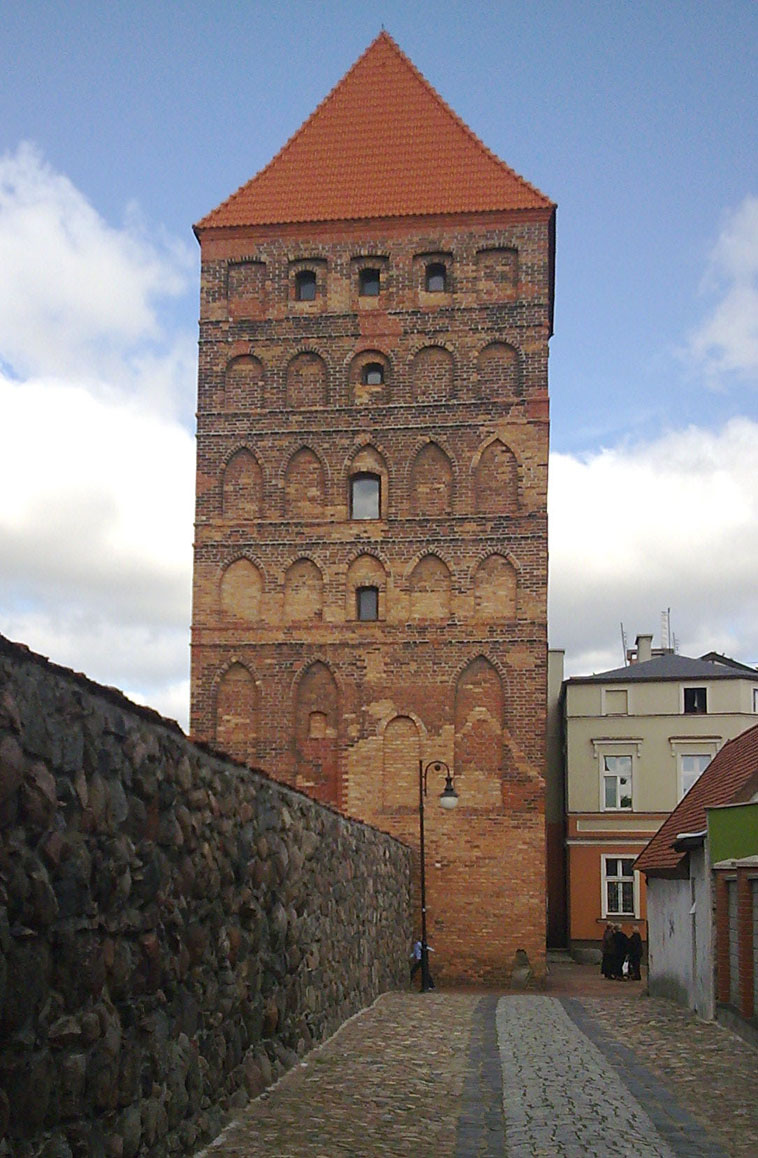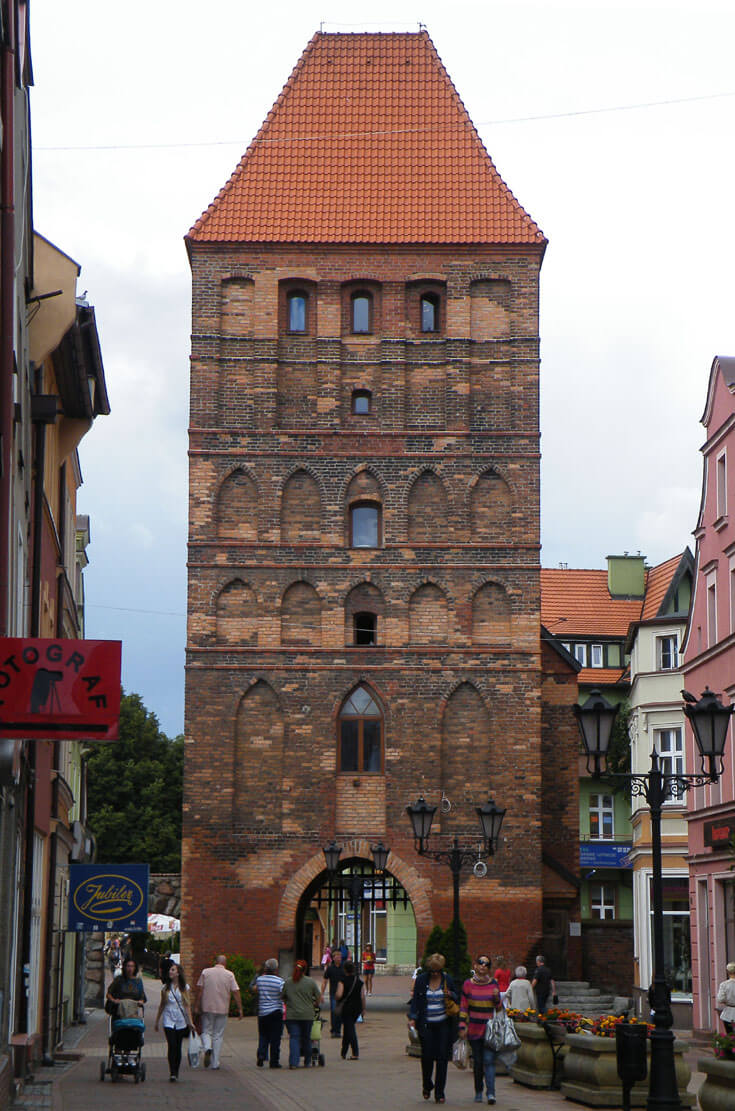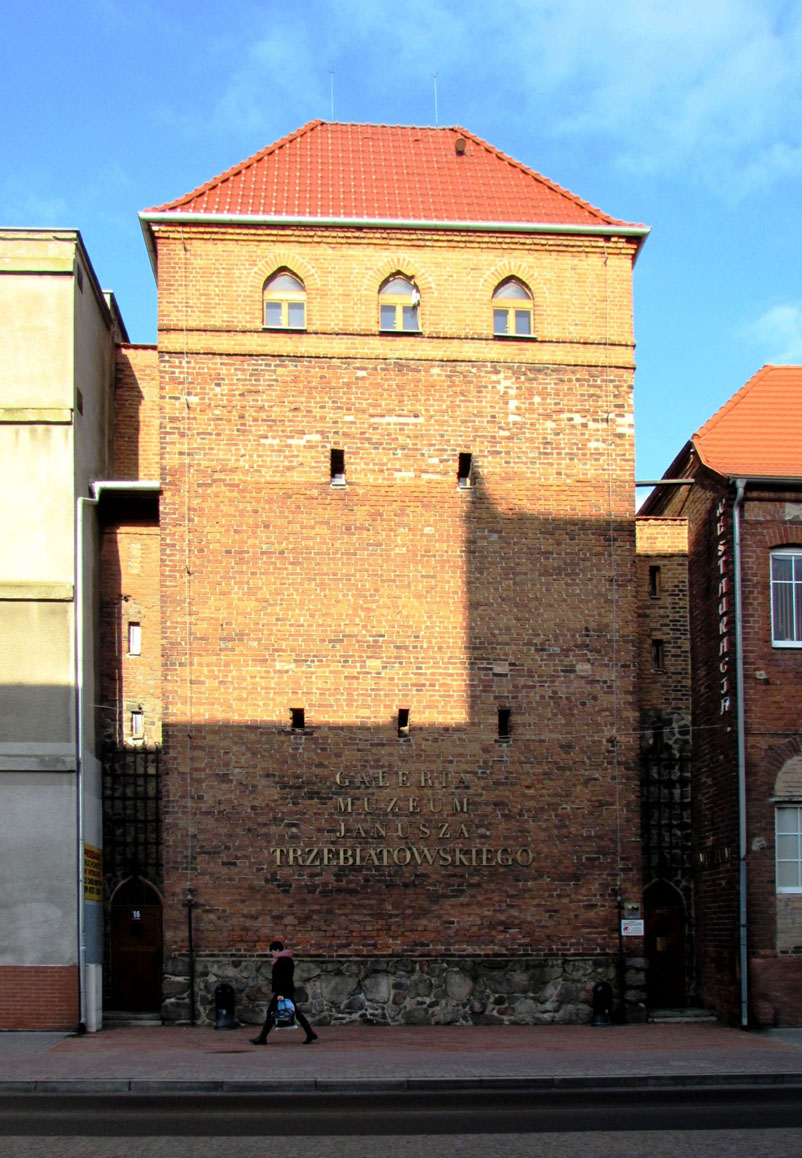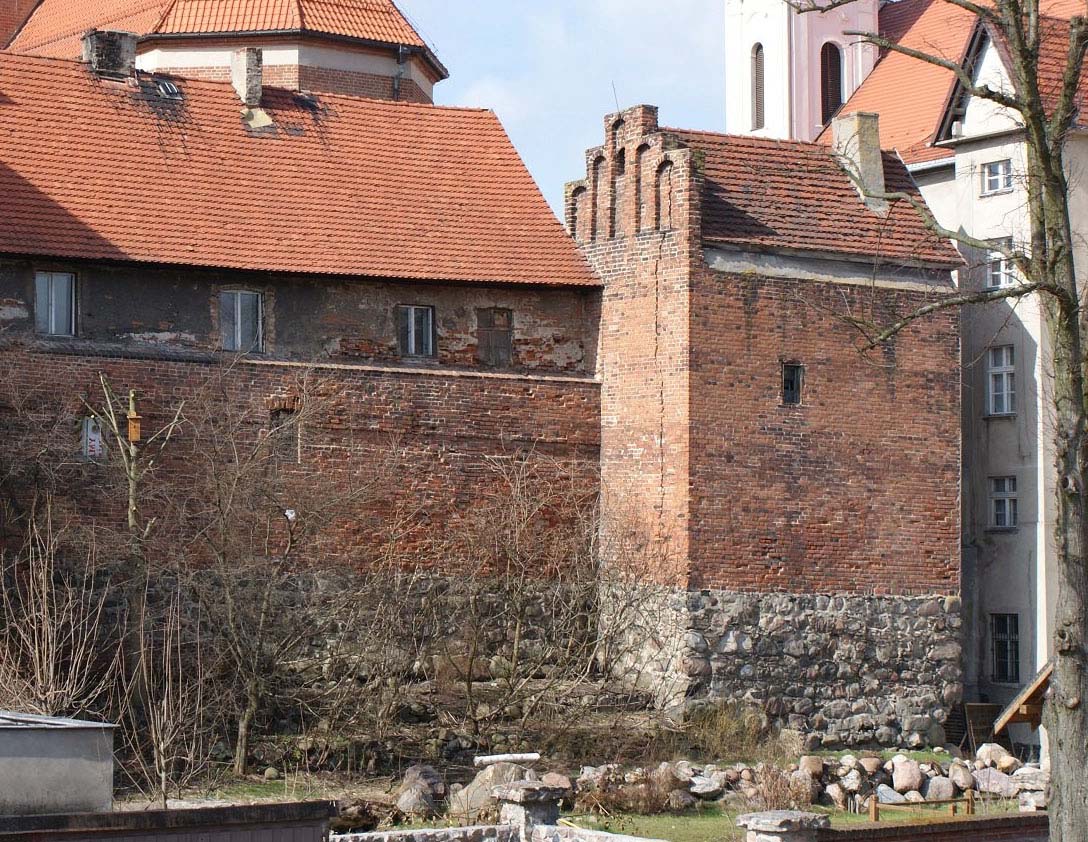History
The builder of the defensive walls of Chojnice (Konitz) was the Teutonic Order, which took over the town in 1309. Since the location privilege has not been preserved, the exact date of foundation of Chojnice is unknown. Certainly it already existed in 1323, because from this time comes the mention of the voigt Reinhard and two burghers: Friczko and Johannes Saxo. Probably the decision to locate the town was made in the middle of the second decade of the fourteenth century, while the first mention of the town walls appeared in 1365. The place for building the town was also influenced by transport conditions. The route between the lakes led from Gdańsk Pomerania to the Western Europe, which, although was not of great importance for trade, but after moving the residence of the Grand Master to Malbork, began to play a fundamental role in the communication of the Teutonic Knights with the German Reich. Roads leading north to Gdańsk and Słupsk and south towards Tuchola also ran through Chojnice. Also the town after fortification were built, began to act as a fortress defending the southern border.
When in 1410 the army of the Grand Master of the Teutonic Order was crushed by the Polish-Lithuanian army near Grunwald, the inhabitants of Chojnice, unlike most towns of the Teutonic state, did not recognize the authority of the Polish king. The town and the nearby castle in Człuchów played a very important role as stage stations for mercenaries coming from the German Reich to help the Order in Prussia. Among other things, for this reason in 1433 Chojnice was besieged unsuccessfully by the allied with Poles, army of Czech Hussites.
In 1454, after the outbreak of the open uprising against the Teutonic Knights and surrendering to Prussian cities to the protection of king Kazimierz Jagiellończyk, near Chojnice, a major battle took place, in which the defeat of the Polish army initiated a troublesome 13-year war with the Teutonic Order. Over the next twelve years, Kacper Nostyc, commander of a mercenary army remaining on the service of the Grand Master, exercised the actual power over the town. Chojnice was conquered only in 1466, after a three-month siege, as one of the last Teutonic fortresses.
After the end of the last conflict between Poland and the Teutonic Order in 1525, a period of over a hundred years of peace began for Royal Prussia, which was interrupted in the first half of the 17th century by the wars with Sweden. During the first invasion of the Swedes to Gdańsk Pomerania, in the years 1626–1629 Chojnice remained on the sidelines of hostilities. However, it suffered the effects of the war of 1655–1660. In 1655, the town was conquered by the army of King Charles X Gustav. During the fighting, the suburbs were burned, and the townspeople were forced to pay contributions and accept Swedish soldiers for housing. Polish troops from 1656 attempted to regain the town, which were successful only after a few months. At the beginning of 1657, after a three-day siege, the Swedish army entered Chojnice again. During the fighting, urban buildings suffered severely, and damage was completed by the plague and a great fire that devastated the town in late 1657. The peace in Oliwa concluded in 1660 ended the war, but its effects hampered the town’s development for several decades. As a result of hostilities, the buildings, fortifications and population dropped significantly. In the 18th century, the defensive walls no longer had any military significance, so they began to be gradually dismantled.
Architecture
The town occupied a small hill, surrounded on three sides by the waters of lakes and marshy wetlands. From the south there was Lake Zakonne, and from the north and east Lake Cegielniane from which flowed river called Struga Jarcewska, formerly named Chojnica, flowing into Lake Charzykowskie located 7 km to the north. From the south and west, access to the walls was defended by double moats separated by a high dike. With the widespread introduction of firearms, Chojnice lost its importance because the town was dominated by hills, stretching in the further foreland from the north and east.
The defensive circuit was built on a plan similar to an oval with dimensions of about 300 x 300 meters. The oldest stone, low walls were about 4 meters high. Later, a brick superstructure was made to a height of about 7 to 9 meters. The wall thickness was from 1.5 to 2.5 meters. On the whole perimeter, they were reinforced with 23 towers, which had various shapes, finials and heights. The towers on a quadrilateral plan dominated, opened from the town side, but also hexagonal and round towers were built. They were all connected by curtains topped with a timber porch and a battlement.
Three gates led to the Chojnice: Mill, Człuchów and Gdańsk, each with a drawbridge over the moat. In front of the Gdańsk Gate, roads leading from the south (from Tuchola) and the northern route from Malbork and Gdańsk converged. Behind the Człuchów Gate, there was a road west to Człuchów. Mainly local traffic flowed through the Mill Gate, because behind it stretched the village and suburb with a mill over the stream, through which the road led towards urban estates and the town forest. After the founding of the Augustinian monastery in the southern suburbs, an additional passage was created in the town walls, the Monk Gate for pedestrians. Probably a similar gate called “Paulscher Tor” was also in the northern section of the town walls.
Current state
Currently, the longest section of the walls is from the south-west on the streets of Sukienniki, Grobelna and Wałowa to Młyńska. The most impressive element of the defense walls is the Człuchów Gate, in which the seat of the Historical and Ethnographic Museum is located. The Crow’s Tower, Kurza Stopa Tower, Shoemaker Tower, Church Tower and Prison Tower also survive.
bibliography:
Atlas historyczny miast polskich. Tom 1 Prusy Królewskie i Warmia, red. R.Czaja, Z.Kozieł, zeszyt 7 Chojnice, Toruń 2013.
Die Bau- und Kunstdenkmäler der Provinz Westpreußen, der Kreise Marienwerder (westlich der Weichsel), Schwetz, Konitz, Schlochau, Tuchel, Flatow und Dt. Krone, red. J.Heise, Danzig 1887.
Ostrowski K., Przewodnik zabytkowe Chojnice, Chojnice 2010.
Sypek A., Sypek.R., Zamki i obiekty warowne Pomorza Gdańskiego, Warszawa 2003.

